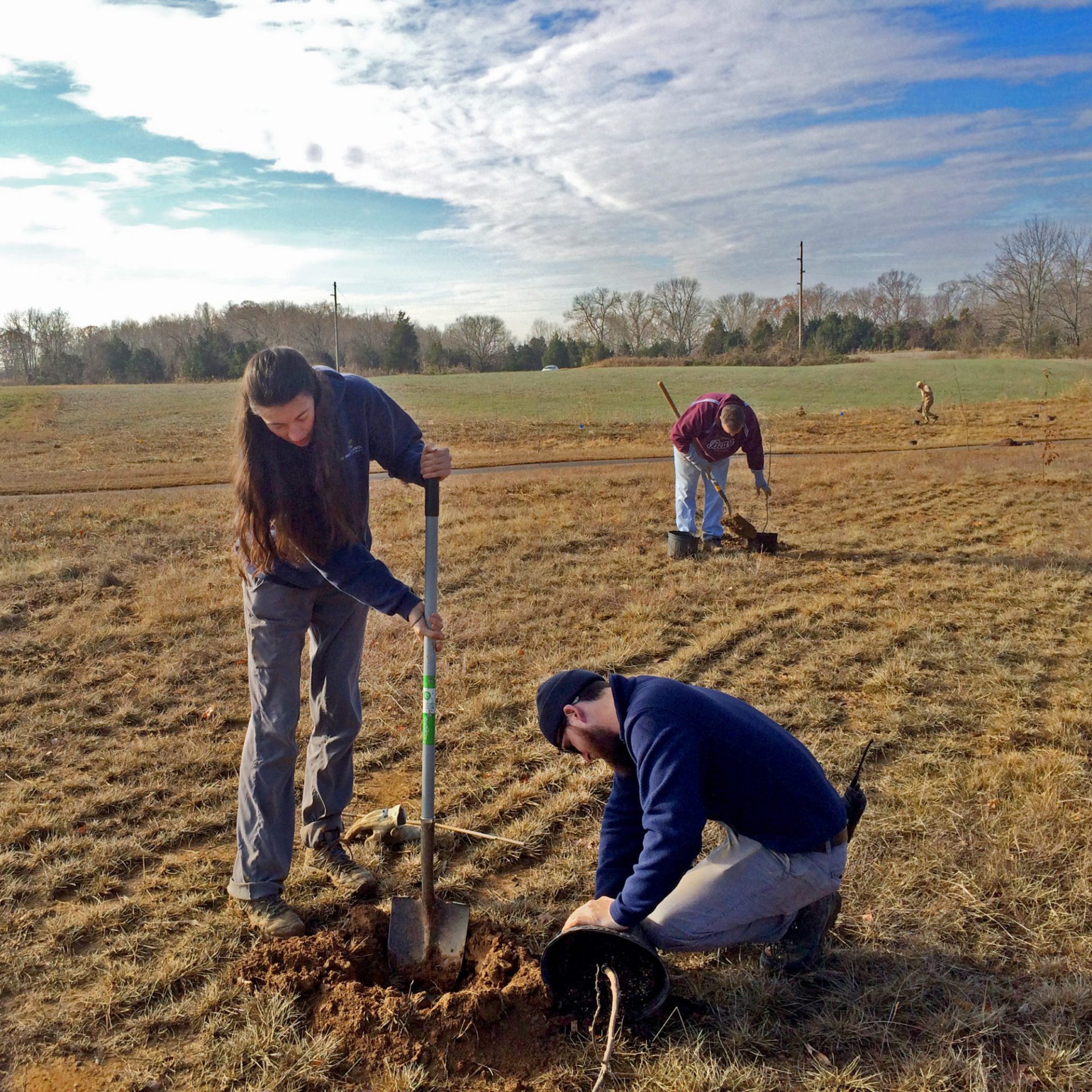
FALL PLANTING: A TRADITION WITH BOUNTIFUL REWARDS
Fall opens our daily lives to a cornucopia of possibilities, from pumpkin and apple picking to hayrides. While festive traditions like these are a highlight of the harvest season, fall can also be an ideal time for planting—an activity that brings its own bountiful rewards.
New trees and shrubs take root at The Parklands
Aaron Boggs, Director of Horticulture and Natural Areas at The Parklands, says most of our new trees and shrubs are planted in the fall season. In Kentucky during the fall, conditions like warm soil temperatures and good soil moisture are conducive to root growth. The plants we add to landscapes each year at The Parklands enrich the diverse ecology within the myriad special places of our parks. They also help us enhance our landscapes and keep them beautiful.
We plant many species of trees native to Kentucky, including oak, maple, serviceberry, sycamore, willow, beech, sweetgum, black gum, persimmon, Kentucky coffeetree, and holly. Aaron says sugarberry (Celtis laevigata) is a new plant that we are using this year in reforestation sites and erosion-prone areas.
Asters and other “season extenders” for pollinators
Kayla Franck, Lead Gardener at The Parklands, says that fall can also be great for planting “season extenders” in gardens to support pollinators. In meadows throughout The Parklands, complementary pairs of asters and goldenrods remain in bloom, providing nutrients to pollinators until late in the season. While we typically install perennials in the spring, these daisy family flowers (Asteraceae) can be planted in the autumn season before the winter frost sets in.
If you’re looking to add to your pollinator garden, we have a few options from the aster family that you may want to consider. Tyler Hampton, Assistant Director of Horticulture, says asters are durable and important for a broad array of pollinators. Species and varieties that have been especially successful in our park landscapes include:
- Aromatic aster (Symphyotrichum oblongifolium): Abundant lavender flowers. This includes “Raydon’s Favorite,” which is often crowded with pollinators and is the last aster to bloom for us. Prefers well-drained soil and full sun.
- New England aster (Symphyotrichum novae-angliae): Royal purple flowers on a taller plant that tolerates a little more moisture.
- White wood aster (Eurybia divaricata): Beautiful cascading plant with white flowers that thrive in moist to dry landscapes with part shade.
- ‘Snow Flurry’ heath aster (Symphyotrichum ericoides): Unique aster that grows as a horizontal ground cover, with hundreds of tiny white flowers blooming in September-October.
Recommendations for watering your fall garden: Kayla advises you to water the plants well immediately after planting. Since fall is typically our driest season, watering in the weeks to follow can ensure establishment and help the soil settle into any air pockets from backfilling. She says these perennials should overwinter just fine and provide fall color next year too.
“Major Wheeler” provides a major help to hummingbirds
Another pollinator plant that our gardeners are tending to this fall is “Major Wheeler,” a native honeysuckle vine with beautiful reddish-pink blooms. Kayla says it is still blooming and providing nectar to hummingbirds that are preparing for their migration south.
The last hummingbirds you see in the season are the youngest birds that hatched this year, and they are trying to get their weight up to make their long journey. Kayla says the Major Wheeler honeysuckle will climb a trellis and aids in the survival of this amazing bird. She notes that it’s important to keep hummingbird feeders clean and refilled through October for this reason.
Rewards that come from careful planning
The splendor you see and experience at The Parklands this fall season is the result of our commitment to renewal and preparation. Whether you aim to add new plants to your home garden this season or are maintaining a plot in a local community garden, we hope you realize the full abundance of rewards that can come from careful planning.
If you would like inspiration for your fall garden, we recommend a simple stroll in one of our parks! As the last flowers of the growing season fade, you’ll see new layers of interest emerge in landscapes throughout The Parklands. Start planning your fall sightseeing excursion today.
